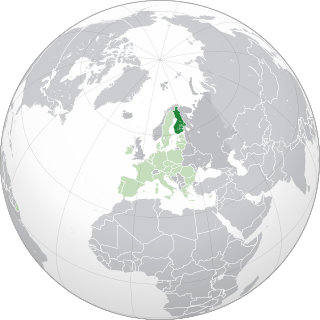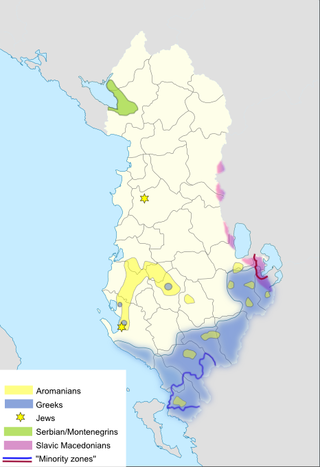| Temple Emil | |
|---|---|
| Religion | |
| Affiliation | Judaism (former) |
| Ecclesiastical or organisational status | Synagogue (1924–1945) |
| Year consecrated | 1924 |
| Status | Destroyed |
| Location | |
| Location | Taft Avenue, Metro Manila |
| Country | The Philippines |
| Architecture | |
| Type | Synagogue architecture |
| Style | Moorish Revival |
| Funded by | Emil Bachrach |
| Completed | 1924 |
| Destroyed | 1945 (Battle of Manila) |
The Temple Emil was a former Jewish congregation and synagogue, located on Taft Avenue, in Metro Manila, The Philippines. The synagogue was destroyed in 1945.
The first Jews known to have settled in the Philippines were Spanish Jews, during the 1600s, with further wave of settlement during the 1870s, from Alsace. Following World War I, Russian Jews settled, to escape discrimination in Russia. [1] [2]
Consecrated in 1924 and completed in the Moorish Revival style, [3] it was the first synagogue in the Philippines. [4] [5] Its construction was funded by the family of Emil Bachrach, an American Jew, [6] at a time when the Philippines was technically an insular territory of the United States. [1] During the 1930s and 1940s, thousands of European Jews emigrated to the Philippines. [7]
The synagogue was destroyed in World War II during the 1945 Battle of Manila which led to the end of the Japanese occupation. [8] It was the only synagogue on territory of the United States that was destroyed during World War II. [1]
The Beth Yaacov Synagogue was built in 1982 to replace Temple Emil at another site in Makati.

A synagogue, also called a shul or a temple, is a place of worship for Jews and Samaritans. It has a place for prayer where Jews attend religious services or special ceremonies such as weddings, bar and bat mitzvahs, choir performances, and children's plays. They also have rooms for study, social halls, administrative and charitable offices, classrooms for religious and Hebrew studies, and many places to sit and congregate. They often display commemorative, historic, or modern artwork alongside items of Jewish historical significance or history about the synagogue itself.

Tisha B'Av is an annual fast day in Judaism. A commemoration of a number of disasters in Jewish history, primarily the destruction of both Solomon's Temple by the Neo-Babylonian Empire and the Second Temple by the Roman Empire in Jerusalem.

The history of the Jews in Greece can be traced back to at least the fourth century BCE. The oldest and the most characteristic Jewish group that has inhabited Greece are the Romaniotes, also known as "Greek Jews." The term "Greek Jew" is predominantly used for any Jew that lives in or originates from the modern region of Greece.
The history of the Jews in the Philippines started during the Spanish period (1521-1898).

The Jewish Quarter is one of the four traditional quarters of the Old City of Jerusalem. The area lies in the southwestern sector of the walled city, and stretches from the Zion Gate in the south, along the Armenian Quarter on the west, up to the Street of the Chain in the north and extends to the Western Wall and the Temple Mount in the east. In the early 20th century the Jewish population of the quarter reached 19,000.

The Great Synagogue of Warsaw was a former Orthodox Jewish congregation and synagogue, that was located on Tłomackie street, in Warsaw, in the Masovian Voivodeship of Poland. Designed by Leandro Marconi and completed in the Neoclassical style in 1878, at the time of its opening, it was the largest Jewish house of worship in the world. The grand synagogue served as a house of prayer until World War II when it was destroyed by Nazis on May 16, 1943.

The history of the Jews in Finland goes back to the late 18th century. Many of the first Jews to arrive were nineteenth-century Russian soldiers who stayed in Finland after their military service ended. The two synagogues in active use today in Finland were built by Jewish congregations in Helsinki and Turku in 1906 and 1912, respectively. The Vyborg Synagogue was destroyed by Russian air bombings on 30 November 1939, the first day of the Winter War. Today, Finland is home to around 1,800 Jews, of which 1,400 live in the Greater Helsinki area and 200 in Turku. Finnish and Swedish are the most common mother tongues of Jews in Finland, and many also speak Yiddish, German, Russian or Hebrew. Since data collection began in 2008, incidents of antisemitism have been on the rise in Finland. The number of incidents are likely under-reported, as Finland does not have a systematic method for recording specific forms of hate speech that incite violence or hatred.

The history of the Jews in Serbia is some two thousand years old. The Jews first arrived in the region during Roman times. The Jewish communities of the Balkans remained small until the late 15th century, when Jews fleeing the Spanish and Portuguese Inquisitions found refuge in the Ottoman-ruled areas, including Serbia.

The history of the Jews in Bosnia and Herzegovina spans from the arrival of the first Bosnian Jews as a result of the Spanish Inquisition to the survival of the Bosnian Jews through the Holocaust and the Yugoslav Wars. Jews are one of the minority peoples of Bosnia and Herzegovina, according to the country's constitution.

The Dohány Street Synagogue, also known as the Great Synagogue or Tabakgasse Synagogue, is a Neolog Jewish congregation and synagogue, located on Dohány Street in Erzsébetváros of Budapest, Hungary. It is the largest synagogue in Europe, seating 3,000 people, and is a centre of Neolog Judaism. The congregation worships in the Ashkenazi rite.

The Zamość Synagogue, also the Zamość Old Synagogue or the Great Synagogue of Zamość, is a former Jewish congregation and synagogue, located in Zamość, in Lublin Voivodeship, Poland. Completed in 1618 in the Renaissance style, the synagogue is a UNESCO-protected World Heritage Site of Poland. Erected during the times of the Polish–Lithuanian Commonwealth, it functioned as a place of worship for Polish Jews until World War II, when the Nazis turned the interior into a carpenters' workshop. The structure was spared from destruction and in 1992 was listed as a World Heritage Site as part of the Old City of Zamość.

The Inowrocław Synagogue was a former Reform Jewish congregation and synagogue, that was located at 64 Solankowa Street, in what is now Skwer Jan-Paweł II, in Inowrocław, in the Kuyavian-Pomeranian Voivodeship of Poland. Designed in the Byzantine Revival style under the supervision of J. Baumgarten, and completed in 1908, the synagogue served as a house of prayer until World War II when it was destroyed by Nazis in 1939.

The history of the Jews in Argentina goes back to the early sixteenth century, following the expulsion of Jews from Spain. Sephardic Jews fleeing persecution immigrated with explorers and colonists to settle in what is now Argentina, in spite of being forbidden from travelling to the American colonies. In addition, many of the Portuguese traders in the Viceroyalty of the Río de la Plata were Jewish. An organized Jewish community, however, did not develop until after Argentina gained independence from Spain in 1816. By mid-century, Jews from France and other parts of Western Europe, fleeing the social and economic disruptions of revolutions, began to settle in Argentina. Argentines of both Ashkenazi and Sephardic heritage have left their mark on all aspects of Argentine culture, including in areas such as cuisine.

The history of the Jews in Albania dates back about 2,000 years. According to historian Apostol Kotani : "Jews may have first arrived in Albania as early as 70 C.E. as captives on Roman ships that washed up on the country's southern shores... descendants of these captives that would build the first synagogue in the southern port city of Sarandë in the fifth century...[but] Little is known about the Jewish community in the area until the 15th century."

The Włodawa Synagogue is a former Orthodox Jewish congregation and synagogue complex, located at 5-7 Czerwonego Krzyża Street, in Włodawa, in the Lublin Voivodeship of Poland. The synagogue complex comprises the Włodawa Great Synagogue, the Small Synagogue or Beit midrash, and a Jewish administrative building, all now preserved as a Jewish museum.

The Choral Synagogue of Vilnius, officially, Taharat Ha-Kodesh Choral Synagogue in Vilnius, is an Orthodox Jewish congregation and synagogue, located at 39 Pylimo Street, in the Old Town of Vilnius, in the Vilnius County of Lithuania.

The history of the Jews in Uruguay dates back to the colonial empire. The most important influx of Jewish population occurred during the end of the 19th century and the first half of the 20th century, mainly during World War II.
Emanuel Maurice "Emil" Bachrach was a Belarusian-Jewish emigrant to the United States who became an entrepreneur and philanthropist in the Philippines.

The Cytron Synagogue, also known as the Beit Midrash Cytron, is a former Orthodox Jewish congregation and synagogue, located at 24a Ludwika Waryńskiego Street in Białystok, in Podlaskie Voivodeship, Poland. Completed in 1936 in the Modernist style, the construction was funded by Shmuel Cytron, it served as a house of prayer until World War II; subsequently used for profane purposes, and as the Sleńdzińscy Gallery, an art gallery.

The Beit Yaacov Synagogue is an Orthodox Jewish congregation and synagogue, located in Makati, in Metro Manila, The Philippines.